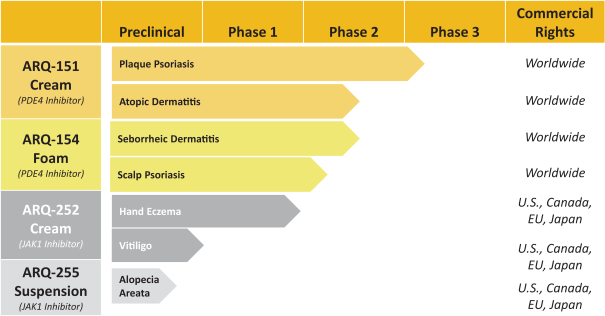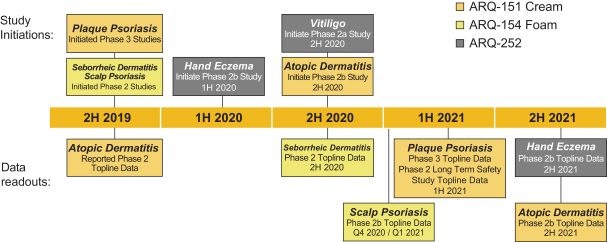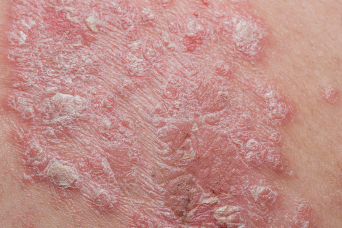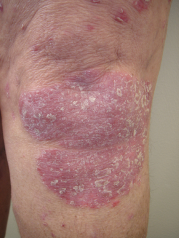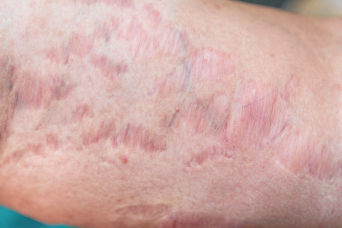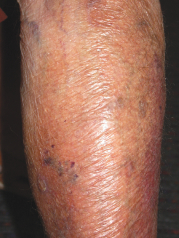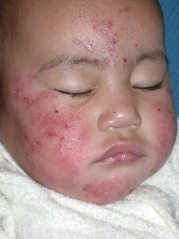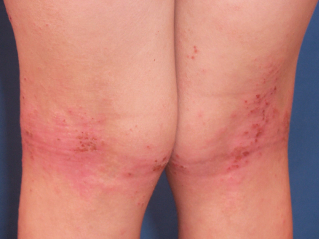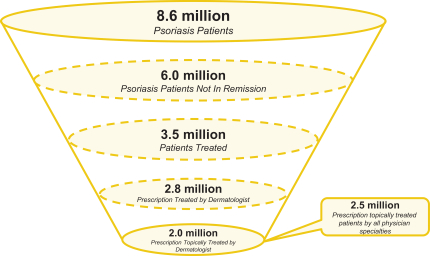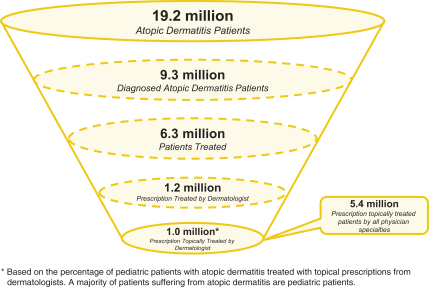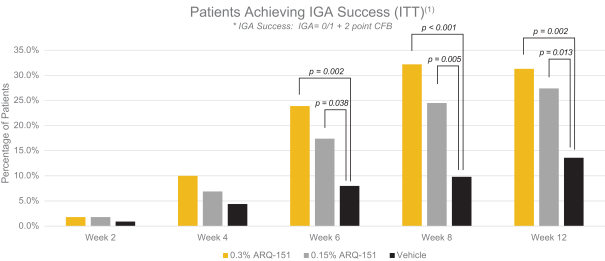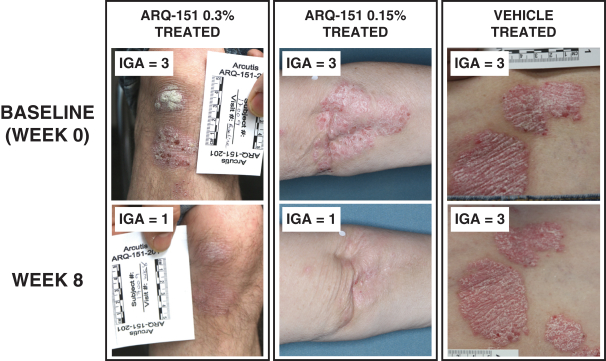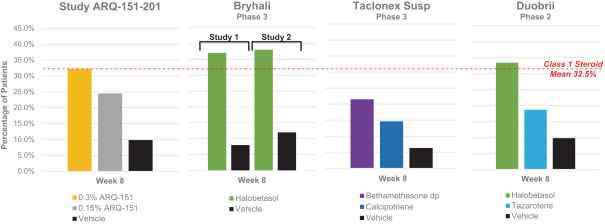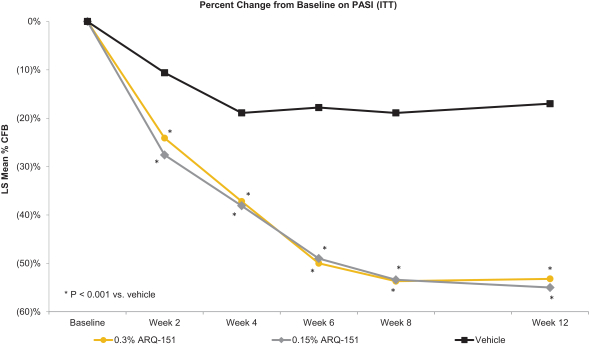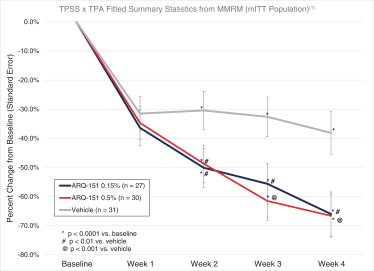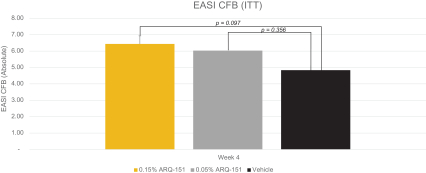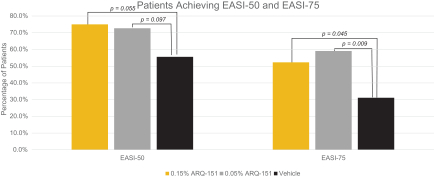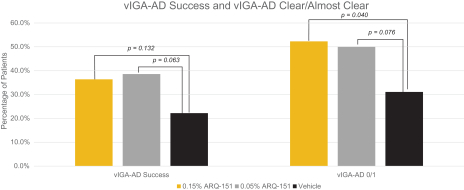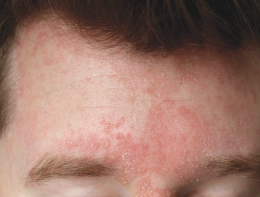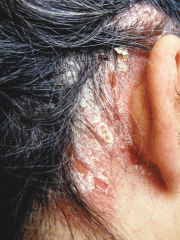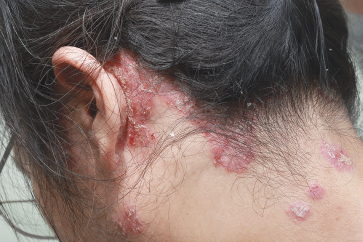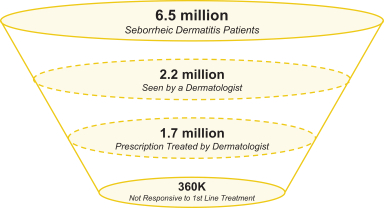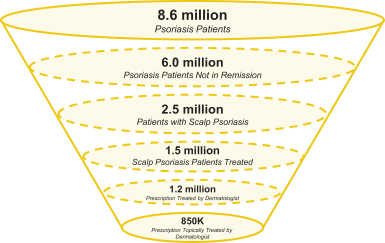For psoriasis, our primary competitors include injected biologic therapies such as Humira, marketed by AbbVie Inc. and Eisai Co., Ltd., and Enbrel, marketed by Amgen Inc., Pfizer Inc., and Takeda Pharmaceutical Company Limited; non-injectable systemic therapies used to treat plaque psoriasis such as Otezla, marketed by Celgene Corporation; topical therapies such as branded and generic versions of clobetasol, such as Clobex, marketed by Galderma Laboratories, LP; and other treatments including various lasers and ultraviolet light-based therapies. In addition, there are several prescription product candidates under development that could potentially be used to treat psoriasis and compete with ARQ-151, including tapinarof, under development by Dermavant Sciences, Inc., and SNA-120, under development by Sienna Biosciences, Inc.
For atopic dermatitis, our primary competitors include topical therapies such as Eucrisa, marketed by Pfizer Inc., and generic and branded versions of low to mid-potency steroids such as hydrocortisone and betamethasone; and the injected biologic therapy Dupixent, marketed by Regeneron Pharmaceuticals, Inc. In addition, there are several prescription product candidates under development that could potentially be used to treat atopic dermatitis and compete with ARQ-151, including but not limited to: topical tapinarof and topical cerdulatinib, both under development by Dermavant Sciences, Inc., topical ruxolitinib, under development by Incyte Corporation, topical delgocitinib, under development by LEO Pharma A/S and Japan Tobacco, Inc., oral PF-04965842, under development by Pfizer Inc., oral upatacitinib, under development by AbbVie, Inc. and injectable lebrikizumab, under development by Dermira, Inc.
For hand eczema, our primary competitors include topical therapies such as branded and generic versions of clobetasol, such as Clobex, and generic versions of betamethasone dipropionate. The only other prescription product candidate we are aware of under development for the treatment of hand eczema that would compete with ARQ-252 is delgocitinib.
For vitiligo, our primary competitors include topical therapies such as generic and branded versions of calcineurin inhibitors, including Elidel, marketed by Bausch Health; branded and generic versions of high potency steroids, including Clobex, marketed by Galderma Laboratories, LP; and other treatments including various lasers and ultraviolet light-based therapies. In addition, there are several prescription product candidates under development that could potentially be used to treat vitiligo and compete with ARQ-252, including but not limited to: topical cerdulatinib, under development by Dermavant Sciences, Inc., topical ruxolitinib, under development by Incyte Corporation, and bothPF-06651600 and PF06700841, under development by Pfizer Inc.
For alopecia areata, our primary competitors include topical therapies such as branded and generic versions of high potency steroids, including Clobex, marketed by Galderma Laboratories, LP; intralesional corticosteroid injections such as branded and generic versions of triamcinolone, including Kenalog, marketed by Bristol-Myers Squib; and systemic immunosuppressants including generic versions of systemic steroids such as prednisone, branded and generic versions of cyclosporine, including Sandimmune, marketed by Sandoz, and branded systemic JAK inhibitors, including Xeljanz, marketed by Pfizer, Inc. In addition, there are several prescription product candidates under development that could potentially be used to treat alopecia areata and compete with ARQ-255, including but not limited to: PF-06651600, under development by Pfizer, Inc., CTP-543, under development by Concert Pharmaceuticals, and baricitinib, under development by Eli Lilly and Company.
Many of our existing or potential competitors have substantially greater financial, technical and human resources than we do and significantly greater experience in the discovery and development of product candidates, as well as in obtaining regulatory approvals of those product candidates in the United States and in foreign countries. Many of our current and potential future competitors also have significantly more experience commercializing drugs that have been approved for marketing. Mergers
33

